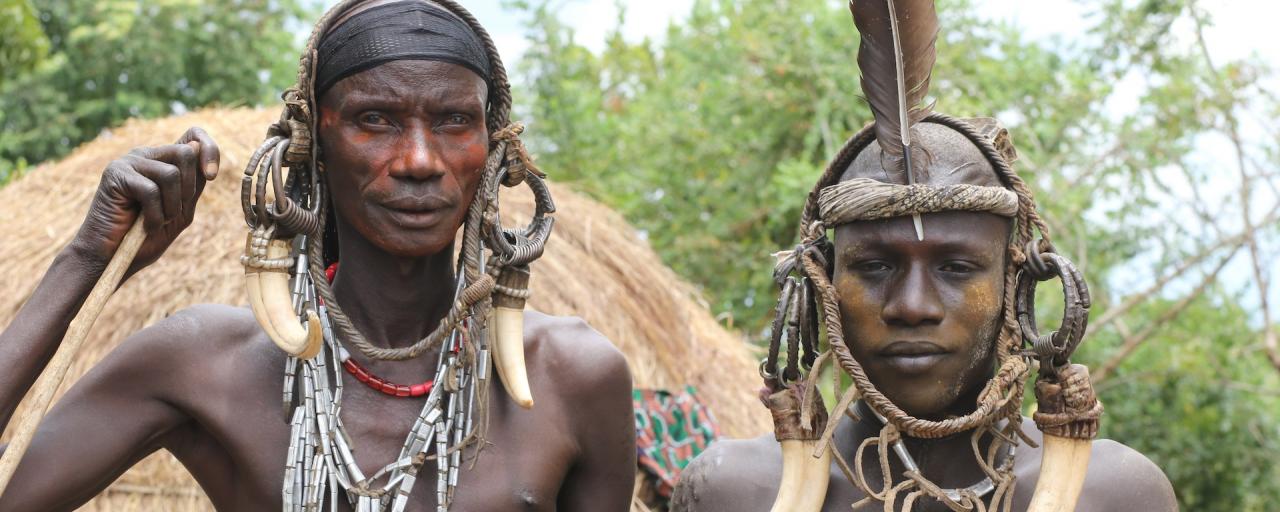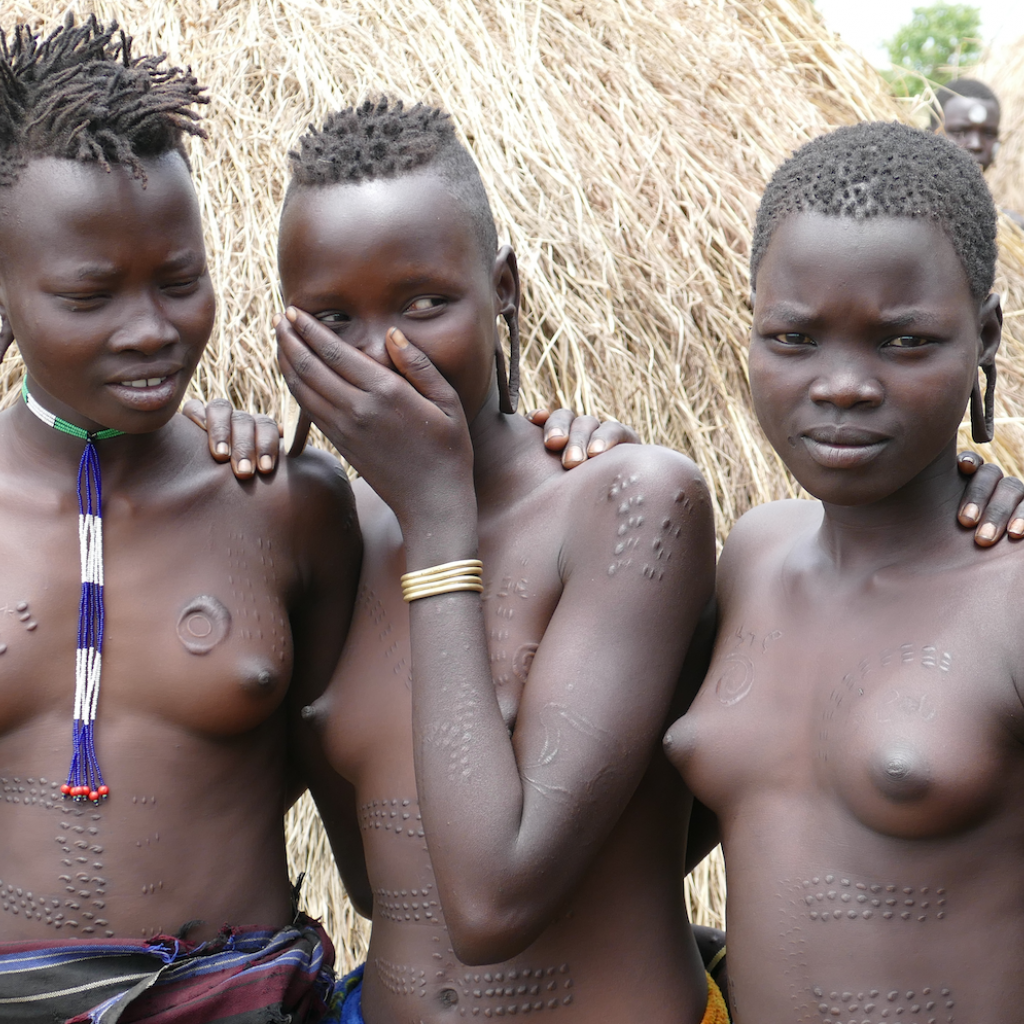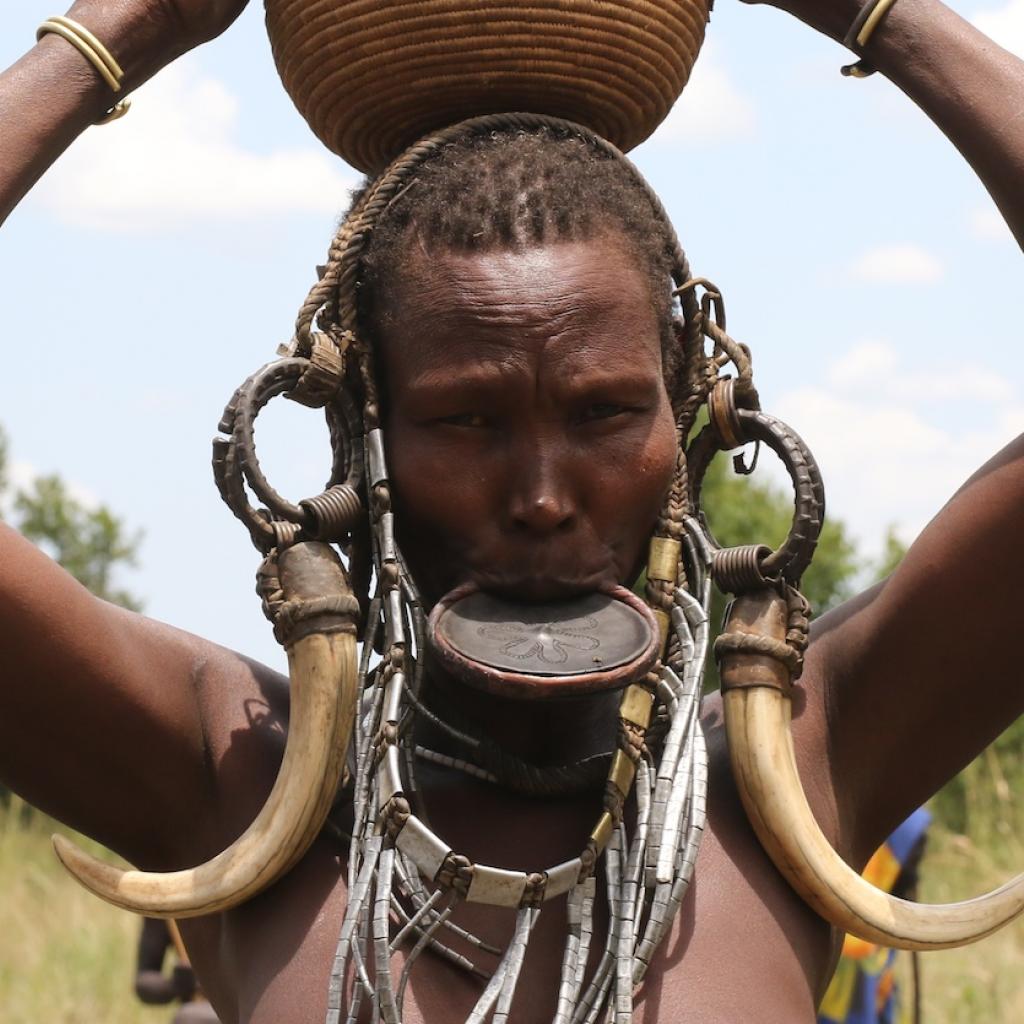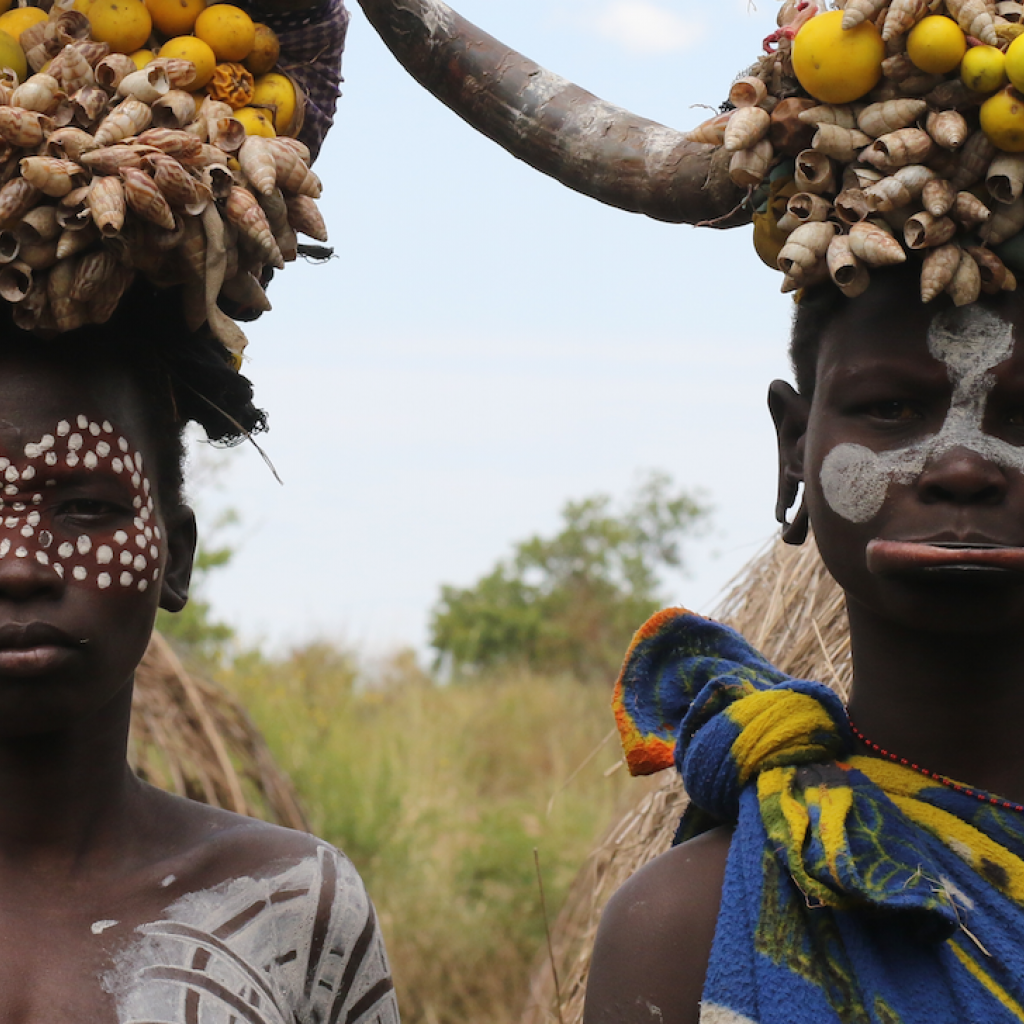The Mursi are a population living in the Lower Omo Valley in Ethiopia, their territory is particularly isolated and difficult to reach, this fact has resulted in this tribe living, until a few years ago, in a situation of isolation. from the rest of the world.
This isolation has allowed the Mursi to reach the present day with traditions and rituals practically unchanged from past centuries.
The clothing of the Mursi
Originally the Mursi men wore the dobi: a suit made with a versatile fabric obtained from the fibers of some plants, to obtain the necessary fibers you have to beat the barks of some plants, until they become thin and elastic; today, however, men tie a long piece of colored fabric around the waist or shoulder.
The traditional dress of the Mursi girls was instead of goatskin, that was tied at the waist to form a kind of skirt; this dress was worn until the birth of their first child then, from the moment after the birth, with a ceremony called jonê chibin, the new mothers received as a gift a leather stole that they wore over the skirt.
Even if it is not a problem for the Mursi to appear naked in public, today women almost always wear a cloth that they tie over one shoulder and that covers the breasts; however, it happens to meet some women with bare breasts as it was customary in the past.
The accessories of the Mursi
The Mursi usually adorn themselves with numerous jewels and accessories, they are both an aesthetic ornament but also reveal the network of social contacts of an individual.
It has also been noted by scholars that people of the same age group wear similar jewels and if a jewel is removed it is immediately replaced by another, but it is not yet clear whether there is a direct correspondence between the age classes of the Mursi and the use of jewels.
Metal bracelets and anklets are the typical accessories of every woman, who usually wears bracelets and anklets in large numbers.
The bracelets worn by women are of two types: M-shaped brass bracelets, the siggi, these are worn in large numbers by all women; the other type of bracelets are the ula, these are the bracelets that are used in the ritual combat of the Ula, they are made of iron, they are much larger and only older women wear them.
Men, both young and old, also wear bracelets that are usually made of wood, bone, ivory or metal.
Elaborate headdresses are worn by both men and women, these imaginative headdresses are made with a variety of materials such as flowers, fruit, antelope or cattle horns, warthog tusks and other objects that the surrounding nature gives them.
The bodily modifications of the Mursi
The tribal culture of the Mursi in Ethiopia, as it happens for other African populations, involves the practice of various body modifications:
• scarifications
• shaving the hair
• body painting or body painting of men
• the lip plate worn by women
The scarifications of the Mursi
Scarifications are one of the best known body modifications of the Mursi; the scarifications of the Mursi are of two types: kitchoga or kitchoa and riru.
Both men and women can have kitchoga or kitchoa scarifications, that are made for aesthetic purposes using a sharp blade, after lifting the skin with a curved spine; while only men can have riru scarifications, that symbolize their strength and courage, these are made with the tip of a hot blade.
Many scholars have noted a parallelism between the riru scarifications of the Mursi men and the engravings of the miren symbols that are made on the mantle of cattle.
Mursi men's hair shaving
Another body modification of the Mursi, although not permanent, is probably linked to the miren symbols drawn on the cattle; these are the shaved concentric circles of men's hairstyles.
The body painting of the Mursi men
Body painting is very important in the Mursi culture and is an exclusively male practice; body painting is used both as an aesthetic factor, to appear more attractive to the opposite sex, and for pragmatic and medicinal reasons.
The Mursi men paint their bodies for different reasons and with different substances: fresh cow dung, the ash from cow dung that has been burnt and clay.
Painting with cow dung and ash from burnt dung is done when a man wants to let people know that he is looking for a wife and to show his skills in herding and domestic life; the use of cow dung also strengthens its bond with its cattle.
Painting with clay, on the other hand, does not have a single interpretation, some scholars say it is used only for healing purposes or to protect themselves from the sun, while others believe that it represents some form of symbolism.
The lip plates of the Mursi women
Another practice of the Mursi women, that makes them easily distinguishable from other tribes, is the use of wearing lip plates on the lower lip; tradition that the Mursi have in common with the Surma.
The Mursi girls practice the incision and insert their first lip plate as a rite of passage from adolescence to adulthood; it also represents a sign of belonging to the Mursi tribe.
The plates can also be inserted into the earlobes, the latter custom is practiced by both women and men.





